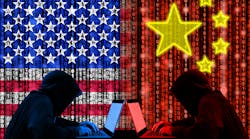At least when I was in elementary school we knew who we were supposed to fear. It was the Cold War era, and if you attended school on a military base like I did, vigilance dictated that emergency preparedness consisted of constant drilling for that fateful day when Russia dropped the bomb.
Truthfully, there wasn’t much to be done. It was as simple as ducking under your desk and covering your head with your hands. In the face of a nuclear holocaust, which none of us really comprehended, even we failed to understand how these precautions seemed adequate.
As our children have moved past the Cold War into the World of Warcraft and Call of Duty 4, the world has become a nastier place. The vague threat of nuclear war and the “duck-and-cover” drills have been replaced by the palpable fear of faceless madmen charging into our schools and slaughtering innocents.
Just as the disturbing images of Columbine and Virginia Tech had begun to fade from America’s collective memory, last week brought new horror to Connecticut. Again we shuttered and cried as the final body count was shared. The shocking violence at Sandy Hook Elementary that saw a lone gunman with an automatic weapon kill 20 children and six teachers , emphasized that standard lockdown plans used by most public schools as their first line of security doesn’t work.
The logic behind a school lockdown plan that employs locking all perimeter doors, activating the school-wide intercom alarm, contacting police and then remaining in your respective classrooms is simple -- the object is to keep the chaos to a minimum and provide the responding police officers an open area to assess and react. However, there are some school administrators and security experts that are taking a different tact. They are looking at a more proactive approach. A couple of the more visible options that have been adopted by some school districts range from the extreme of certifying and training teachers to carry firearms, to a controversial method advocating that potential victims should stand up against the gunman.
Arming the Teachers
In the wake of the Columbine shooting, one small Texas school district 150 miles northwest of Dallas decided to allow teachers to carry concealed weapons on campus as a deterrent to potential active shooters. The Harrold school district has allowed its employees to carry guns since 2008. The district’s superintendent David Thweatt said the district's "Guardian Plan" is a way of taking charge in the chaos of a potential shooting. Because his school district is more than 20 minutes away from the closest law enforcement, he views his teachers and administrators as “true first responders.” Having the ability to immediately respond is what drives Thweatt’s philosophy, saying that it is not good enough to wait four, five or six minutes to respond to a threat to your children.
He also added that, "As educators, we don't have to be police officers and learn about Miranda rights and related procedures. We just have to be accurate." The superintendent admitted that he wasn’t sure if his plan would have stopped the tragedy in Newtown last week, but he strongly believes that active shooters will select targets they feel are vulnerable and not those deemed as hard and protected.
Proactive Shelter-in-Place
Greg Crane, a former teacher and SWAT officer, doesn’t advocate arming teachers. He does, however, think that the current response plans many schools endorse don’t address the potential threats and can even be dangerous to staff and students. For Crane, the strategy of locking down a school and then waiting for police intervention is inadequate and much too passive a response. He contends that by huddling in classrooms or in closets we provide potential shooters easy targets. His goal is to teach a more proactive response he thinks can save lives, which in some cases may include challenging the gunman.
The program he has developed is called “A.L.i.C.E. Training” -- which stands for alert, lockdown, inform, counter, evacuate -- and is predicated on the premise that if potential victims make themselves a more difficult target, their survival rates increase. In a recent interview on National Public Radio, Crane said that his training doesn’t tell {students and staff} what to do, rather it instructs them what they can do. “Ultimately, they're going to be the ones experiencing this danger, and we want them to be the ones to decide, 'What is it that I can do that will increase my chance of survival?' "
The A.L.i.C.E. supporters say the training is all about empowering potential victims in a shooting situation to make life-and-death decisions, including children. More than 1.5 million students in 300 school systems -- from elementary to universities -- have taken this training.
Auburn University emergency manager Chance Corbett recently conducted A.L.i.C.E training on campus for more than 30 students and staff, noting that the survival rate of potential victims depended on how each reacted to the threats posed. “When it gets to the point that [the shooters] are there to do the harm, do you really want your kid just to hide under the desk?” Corbett asks. He pointed to one example in the Auburn emergency training simulation where 12 students in one building were 'killed' in a classroom and eight in another where they simply huddled in the back of the room. There were zero casualties in another classroom where students and staff barricaded the door.
As we contemplate stricter gun control laws, debate the effect of violent children’s entertainment and how to better intercede with the mentally ill, it seems all options are now on the table when it comes to securing our schools.
Solutions that might have been considered far-fetched are now just “out-of-the-box” ideas. But there remains one constant. There must be a security strategy all schools embrace and practice. And it must be more than just duck and cover.


